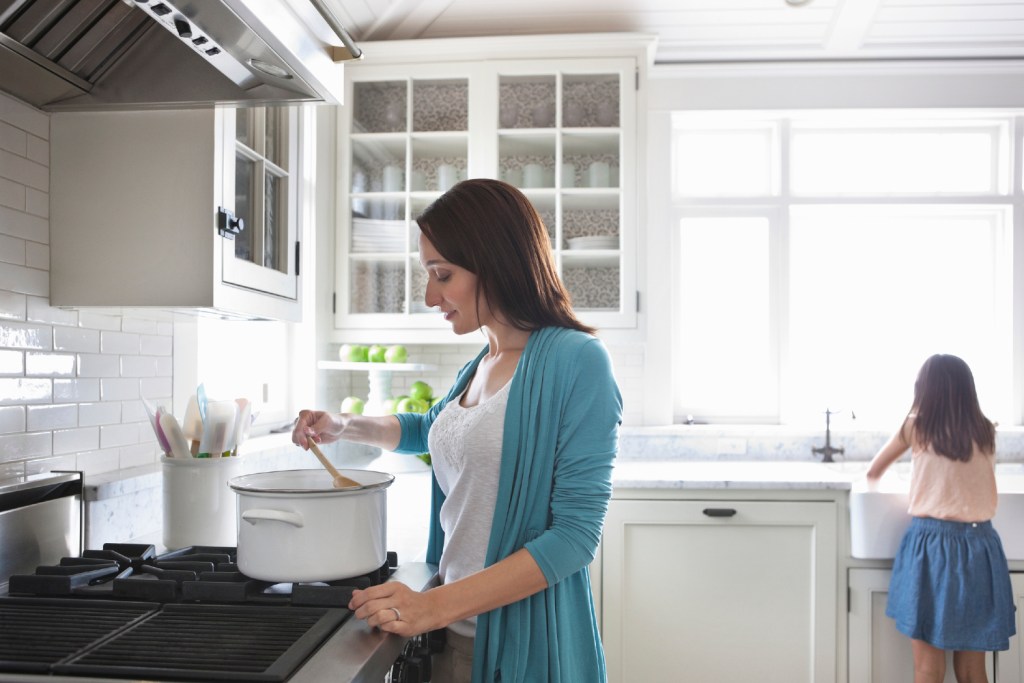Everyone cooks. Whether you are a seasoned pro or a novice in the kitchen, at some point in life, you have to cook food for yourself or others. If boxed macaroni and cheese is your specialty, you may have never wondered if expensive cookware is a worthy investment. But if you enjoy cooking and spend a lot of time in the kitchen, you have probably wondered if you should invest in some higher-quality cookware. Many people who love to cook also love to visit cookware stores and websites and often find themselves feeling like a kid in a candy store. But is the expensive cookware worth it? Does it really make a difference when it comes to the home chef?
If you’ve shopped for cookware lately, you are probably aware that the price of pots and pans can be extremely steep. Of course, there are sets out there on the cheap side, but those are probably just that; cheap. So are the sets that cost hundreds of dollars worth it? What causes the dramatic difference in price between the $30 set and the $300 set? Does the average home cook need pots and pans that are hundreds of dollars? Ultimately a lot of prices when it comes to cookware comes down to aesthetics and marketing. Visually appealing, name-brand cookware tends to be more expensive than the alternatives. However, the main factor when considering cookware is the materials the pots and pans are made of and it mostly comes down to science.
Reactivity
The metal that a pot or pan is made of will determine its reactivity. Reactivity is whether a pot or pan will react chemically with the food that you are cooking in it. Reactivity, in this case, is a bad thing. You don’t want the food you are cooking to react with the metal of the pan because it will cause an undesirable change in the color or taste of the dish. Therefore, nonreactive materials are best when considering cookware. Nonreactive materials include stainless steel and ceramics. Reactive metals include copper, steel, iron, and aluminum.
Heat Conduction
Heat conduction refers to how well a pot or pan transfers heat from the heat source (usually the burner on your stove) to the food inside it. Copper, for example, is an excellent conductor, which means that when cooking in a copper pan, adjusting the burner’s temperature makes a temperature change inside the pan quickly. Aluminum and stainless steel are also excellent conductors. The other factor to consider regarding conduction is the pot or pan’s heating elements. The placement of heating elements contributes to the conductivity of the pan.
Different Types of Cookware

Copper
Copper is the most expensive metal of all of the materials that can be used to make cookware. Copper conducts heat the best but is very reactive. To reduce reactivity, many manufacturers coat the copper with tin or stainless steel. Ultimately, the cost of copper pots and pans will depend on the thickness of the cookware. As a general rule, you want to purchase cookware that is at least 2 mm thick.
Aluminum
Aluminum is a cheap metal and conducts heat very well, but it is reactive with acidic foods and is very lightweight. Lightweight cookware may feel good in your hands and be easier on your wrists while cooking, but it does nothing in terms of durability. Some manufacturers will clad the aluminum with stainless steel to add strength and reduce reactivity. However, cookware that has been clad with stainless steel on both the inside and outside tends to be on the expensive side when compared to aluminum cookware that has not been clad. Lower end aluminum cookware will have cladding on the bottom of the pan only, which is known as a disc bottom. This drives the cost of the pot down but leaves you susceptible to scorching on the sides of the pans and a difference in temperature between the bottom of the pan and the sides of the pan, which can lead to uneven cooking.
Cast Iron
Cast iron is the cheapest material of the bunch and is also the worst-performing. Cast iron cookware has been used for centuries, but it creates hot spots and takes a really long time to actually heat up. The good news is that once the pan comes to temperature, it will hold that heat for a really long time. This is why cast iron is often used to sear meats. You can find pretty cheap cast iron cookware, but there are overpriced pieces on the market too.
Non-Stick
Non-stick cookware is usually just aluminum pans with non-stick coatings. These pans are generally the best value for your money, but they don’t store a ton of heat, and they won’t last very long. The reason for the short shelf life is that once the non-stick coating chips, scratches, or wears away, the pan is pretty much useless. Thus, you cannot use metal utensils in non-stick pans, which can be inconvenient at times.
The Bottom Line
Ultimately, the significant difference between expensive and cheap cookware comes down to many factors. Most of the time, high priced cookware is a result of branding and marketing. There is very expensive cookware that is not very durable and is constructed poorly. On the other hand, some inexpensive cookware can be reliable and very well made. So, you should look for cookware that is sturdy and is made of a metal that suits what you will be cooking most often. As a general rule, if you want a high-performance pot or pan, copper is the way to go in terms of durability and conductivity. If you cook a lot and enjoy investing in high-quality cookware, the price will be well worth it.
Editors' Recommendations
- How to make Swedish meatballs even tastier than IKEA’s
- 6 delicious Thanksgiving desserts to make if you kind of hate pie
- Does vacuum packing clothes really save storage?
- 8 tasty 4th of July desserts even baking novices can make
- A Super Bowl party isn’t complete without these delicious, easy-to-make eats




